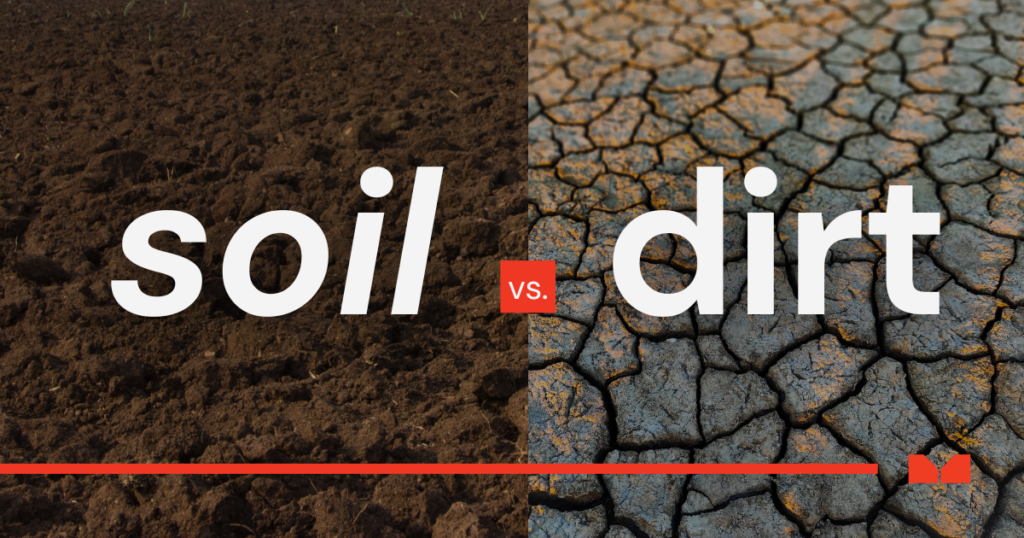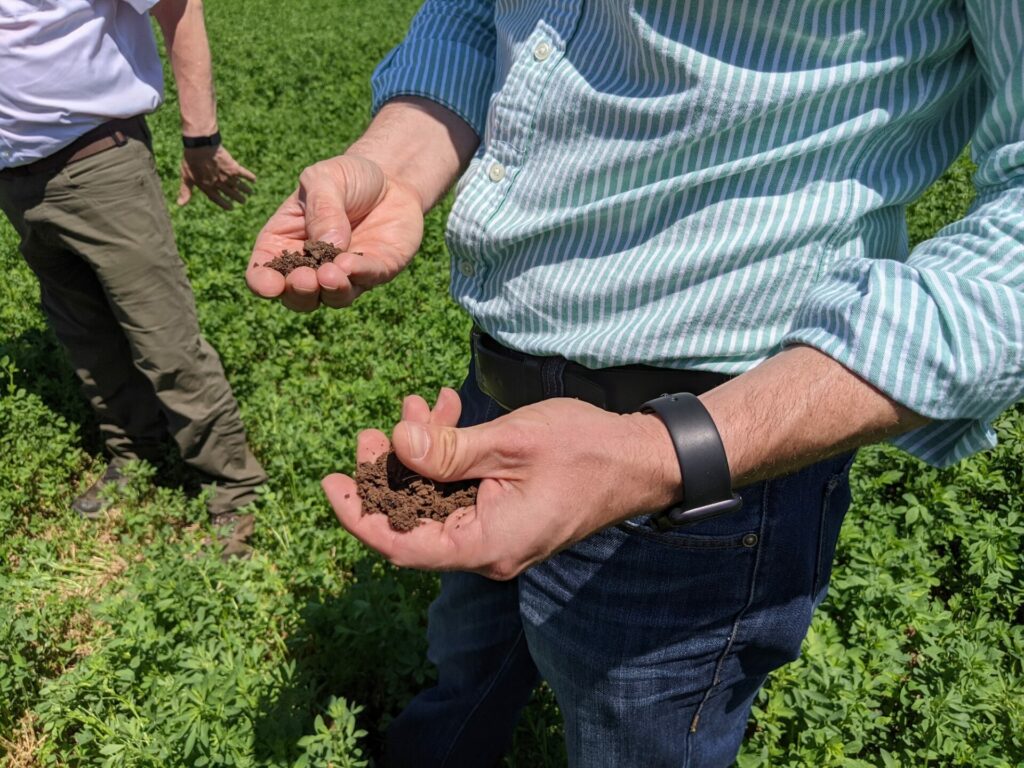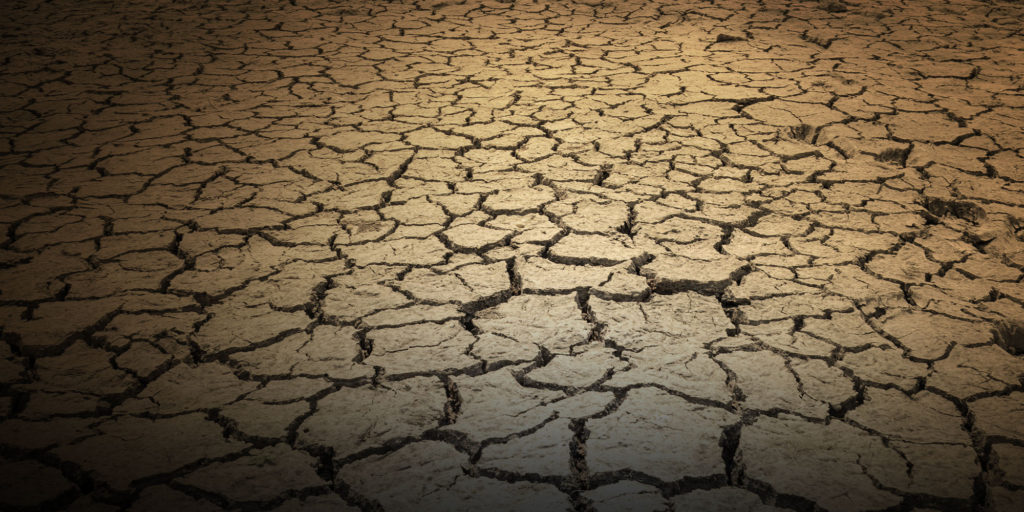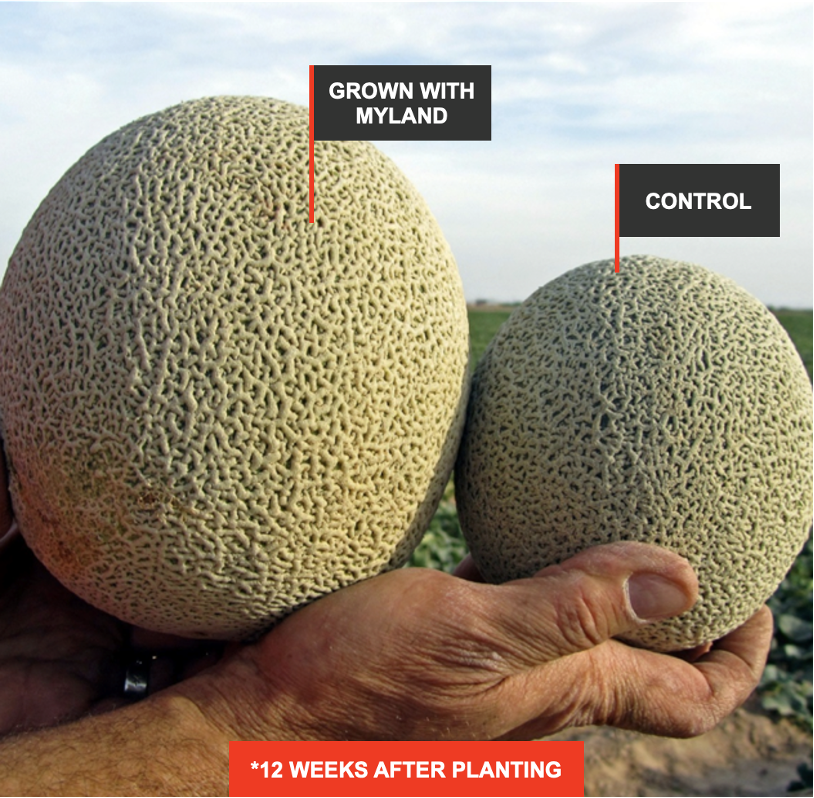
Soil vs Dirt Explained: The Difference Matters More Than You Think
If you’ve spent enough time in agriculture, you’ve likely heard someone say, “It’s not dirt, it’s soil.” There’s more truth to that statement than most people realize. The difference between soil and dirt isn’t just a matter of semantics, it’s a fundamental distinction that affects everything from crop yields to ecosystem health. Farmers know that what’s beneath their boots is far more than just something to plant in—it’s the foundation of their entire operation. And the more we understand that difference, the better we can care for the land we depend on.
Soil: The living foundation of agriculture
“Soil is not an inert growing medium – it is a living and life-giving natural resource.”
– USDA Natural Resources Conservation Service
Soil is a complex, living ecosystem teeming with life. It’s made up of minerals, water, air, organic matter, and perhaps most importantly, microorganisms. A single teaspoon of healthy soil contains more living organisms than there are people on the planet.1 These living organisms —bacteria, fungi, protozoa, and other microscopic life forms—work together to cycle nutrients, break down organic matter, aid in soil aggregation, and create the conditions for plants to grow and thrive.
Beyond that, soil has a structure that dirt doesn’t. Healthy soil is made up of aggregates, or clusters of soil that are bound together by organic matter and microbial secretions known as exopolysaccharides. These aggregates are important because they create spaces and pathways in the soil for roots to grow and for water to infiltrate. Earthworms enhance this process by moving soil around, creating aeration, and supporting overall soil structure. But I bet you’ve never seen an earthworm in dirt.

As powerful as soil is, it’s also incredibly fragile. It takes thousands of years to naturally create one inch of fertile topsoil, and it can be destroyed in a matter of minutes.2
That’s why it’s critical to know the difference between soil and dirt. Only soil provides the foundation for plants to grow.
Ready to see a difference on your farm?
Harness your soil’s native organics. Growers who have worked with MyLand to improve soil health achieve greater crop productivity and profitability.
Dirt: What’s left when soil loses its vitality
The late University of Florida horticulture professor Rick Schoellhorn once wrote:
“Soil scientists will tell you there is no such thing as ‘dirt,’ there is only soil.”
Dirt is what’s left when soil is displaced, or even when it loses its vitality, even if it remains where it’s “supposed” to be. Dirt is displaced, dead, and disconnected from the soil ecosystem. It lacks biological activity, structure, and nutrients: the qualities that make soil fertile and suitable for plant growth.
Dirt is what you sweep off your porch. It’s what you wash off your hands at the end of your day, or knock off the bottom of your boots. It’s what soil becomes when it’s degraded by any of the practices or factors that remove its life: erosion, flooding, natural disasters, overgrazing, chemical overuse, or poor management. Turning soil into dirt—however it happens—is a real problem.

Why soil vs dirt matters
Understanding the difference between soil and dirt isn’t just about scientific accuracy; it’s about recognizing the role soil plays in sustaining life.
Soil health is defined by the USDA as “the continued capacity of soil to function as a vital living ecosystem that sustains plants, animals, and humans.”
When we lose healthy soil, we lose productivity, water-holding capacity, and biodiversity.
For farmers and ranchers, the consequences of soil degradation can be severe. Poor soil structure leads to increased runoff, which means less water retention and greater vulnerability to drought. Nutrient depletion forces growers to rely more heavily on fertilizers, driving up costs and sometimes leading to further environmental harm. And when microbial life is lost, soil loses its ability to naturally suppress disease, making crops more susceptible to pests and pathogens. Many growers know the pain of farming in dirt, or in soil that’s lost its vitality.
To better understand the difference between soil and dirt, it’s helpful to look closer at soil’s composition, functionality, and location.
Composition
- Soil contains minerals, organic matter, and living organisms.
- Dirt lacks life (and without life, no organic matter exists).
Functionality
- The existence of soil is essential for crops to grow. It supports ecosystems and filters water. Healthy soil sustains agricultural and environmental balance.
- Dirt cannot sustain any type of life, including plant life or microbial life.
Location
- Soil is found in fields, forests, gardens, and other natural landscapes.
- Dirt is found outside of these natural locations: on roads, on the soles of our shoes, and in places where the functions of soil are absent.
The shift toward soil health
Here at MyLand, my job as senior agricultural researcher is to educate our incredible growers on practices that can improve the health of their soil. Thankfully, the folks at MyLand aren’t the only ones passionate about soil health. Worldwide, there’s a growing movement towards sustainable farming practices, which are helping growers revitalize their lands and benefit from economic and ecological fruits of their labors.
So, what can we do to keep soil from becoming dirt?
It starts with good management practices that protect and enhance soil health:
- Minimize disturbance – Tillage disrupts soil structure and destroys microbial communities. Reduced-till practices help keep soil intact and biologically active.
- Keep soil covered – Bare soil is vulnerable to erosion and moisture loss. Cover crops, mulches, and residue management all help protect soil from the elements.
- Maintain biodiversity – Crop rotations, diverse plantings, and integrating livestock can enhance soil biology and improve resilience.
- Feed the soil – Adding organic matter through compost, manure, and plant residues helps maintain soil fertility and structure.
- Manage water wisely – Proper irrigation and drainage techniques ensure that soil retains moisture without becoming waterlogged or eroding away.
- Invest in your soil health
The physical, biological, and chemical traits of soil
Healthy soil isn’t just about being alive—it has specific physical, biological, and chemical characteristics that make it capable of supporting plant life.
Physical characteristics:
Soil tilth is the overall physical condition of soil, including structure, water retention, and ease of working. You’re looking for a balanced mix of sand, silt, and clay, and organic matter. This gives soil a structure that supports healthy root development and creates an ideal environment for seeds to germinate and for roots to grow. Stable soil aggregates, moisture content, and aeration all play a part in the physical characteristics of soil. In contrast, dirt lacks structure and porosity, making it difficult for roots to grow and access essential nutrients.
Biological characteristics
Soil is absolutely full of microbial life, including bacteria, fungi, and protozoa, which are integral to the biological characteristics of healthy soil. Microbes perform many critical functions during their lifespans underground, like breaking down organic matter, cycling nutrients, and helping plants access those nutrients. A diverse and abundant microbial community ensures that these processes happen smoothly, all the while supporting plant growth and maintaining soil fertility. Dirt, on the other hand, lacks this microbial activity, making it lifeless and unable to support plant growth effectively.
Chemical characteristics
Healthy soil acts like a well-stocked pantry for plants, providing all the essential nutrients for growth. The chemical characteristics of healthy soil include most of the 14 essential nutrients that plants need to thrive with nitrogen (N), phosphorus (P), and potassium (K) often considered the most critical, referred to as NPK. These nutrients play key roles in various plant functions, from leaf development to root growth and flowering. Nutrient availability is just as important as nutrient balance: too little of one nutrient can lead to deficiencies, while too much can cause toxicities and issues like nutrient runoff. Dirt, having lost its organic matter and microbial activity, often requires excessive fertilizer input to support plant growth.
What are the benefits of healthy soil?
Healthy soil provides a wide range of benefits, including:
- High water-holding capacity, which can help reduce the need for excessive irrigation and even allow crops to survive during dry periods.
- It acts as a natural water filter, purifying water as it travels underground. It captures pollutants, breaks down harmful chemicals, and prevents those chemicals from reaching groundwater.
- The healthier the soil, the more it can support farm longevity. Nutrient-dense soil ensures the productivity of crops year after year—a process that enhances food security worldwide.
- Climate change is also impacted by healthy soil. When soil is healthy, it captures and stores carbon dioxide from the atmosphere and reduces greenhouse gas levels. It can also help to prevent erosion and degradation due to wind and water runoff.
- For humans, healthy soil is a main ingredient in us living our lives. It gives us clean water and healthy, abundant, high-quality crops.

Conclusion: Healthy soil for grower success
Soil and dirt are not the same. Soil is a living, essential resource that forms the foundation of agriculture. Treating soil with care is the key to both short-term productivity and long-term farm success.
When we understand the difference between soil and dirt, we begin to see the land not as a mere surface to grow crops but as a dynamic ecosystem that needs to be nurtured. And when we take care of our soil, it takes care of us.
After reading this, we encourage you and your team to reflect on how you treat soil in your daily life and explore ways to support soil health in your backyard, farmland, or community. Learn more about our soil health solutions at myland.ag.
Sources
- According to the British Society of Soil Science, one teaspoon of healthy soil contains more living organisms than there are people on the planet.
- The National Geographic Society reports that it takes the planet thousands of years to create one inch of fertile topsoil, and it can be destroyed in a matter of minutes.